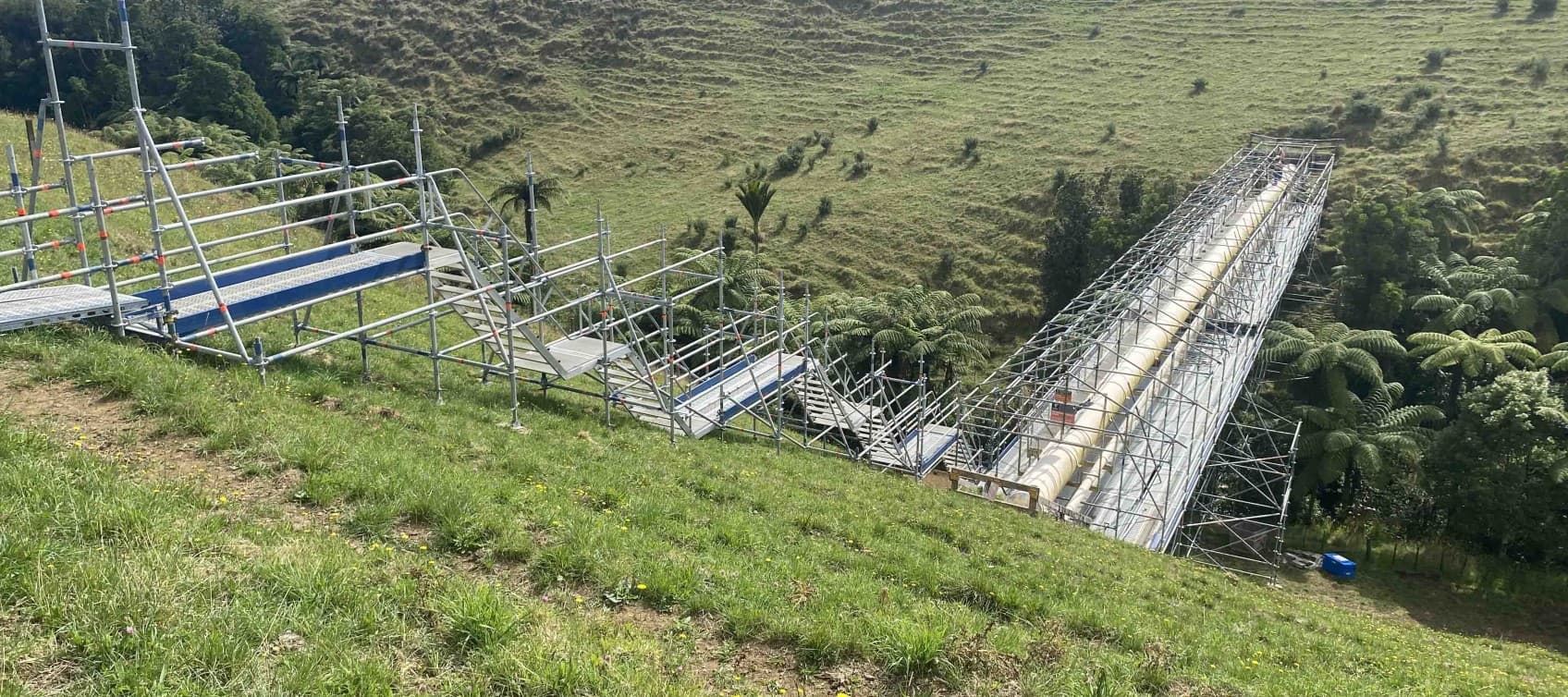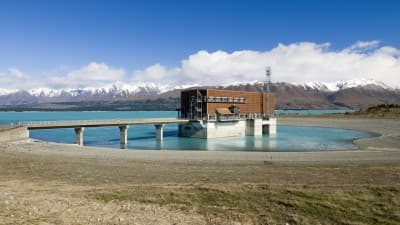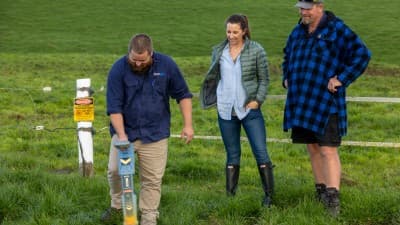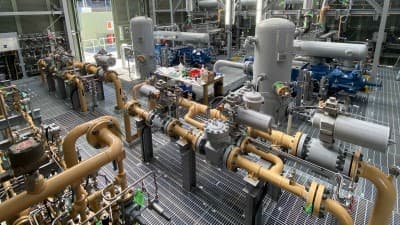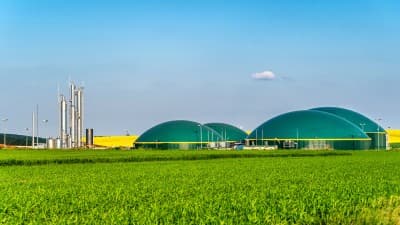Keeping our pipelines in excellent condition and protecting them from corrosion is a crucial part of our work at Firstgas. We have a continuous programme in place to inspect and maintain them.
While most of our pipelines are underground, there are also aerial crossings where they are visible above ground. One of those aerial crossings is the Katikara Steam in Ōkato, Taranaki and we’ve recently recoated it to protect it from the environment.
How do you paint a large section of pipe with a 34-inch (864mm) diameter?
You need to do it safely, for both people and the environment, and you need to set everything up well in advance, explains Marius Gray, Corrosion Prevention Manager at Firstgas. Marius and his Corrosion Prevention team specialise in corrosion control, cathodic protection, assert integrity and protective coatings. With the support of Coating Technician Robert Johnson and apprentice Grace Bryant, the team successfully managed this complex painting project.
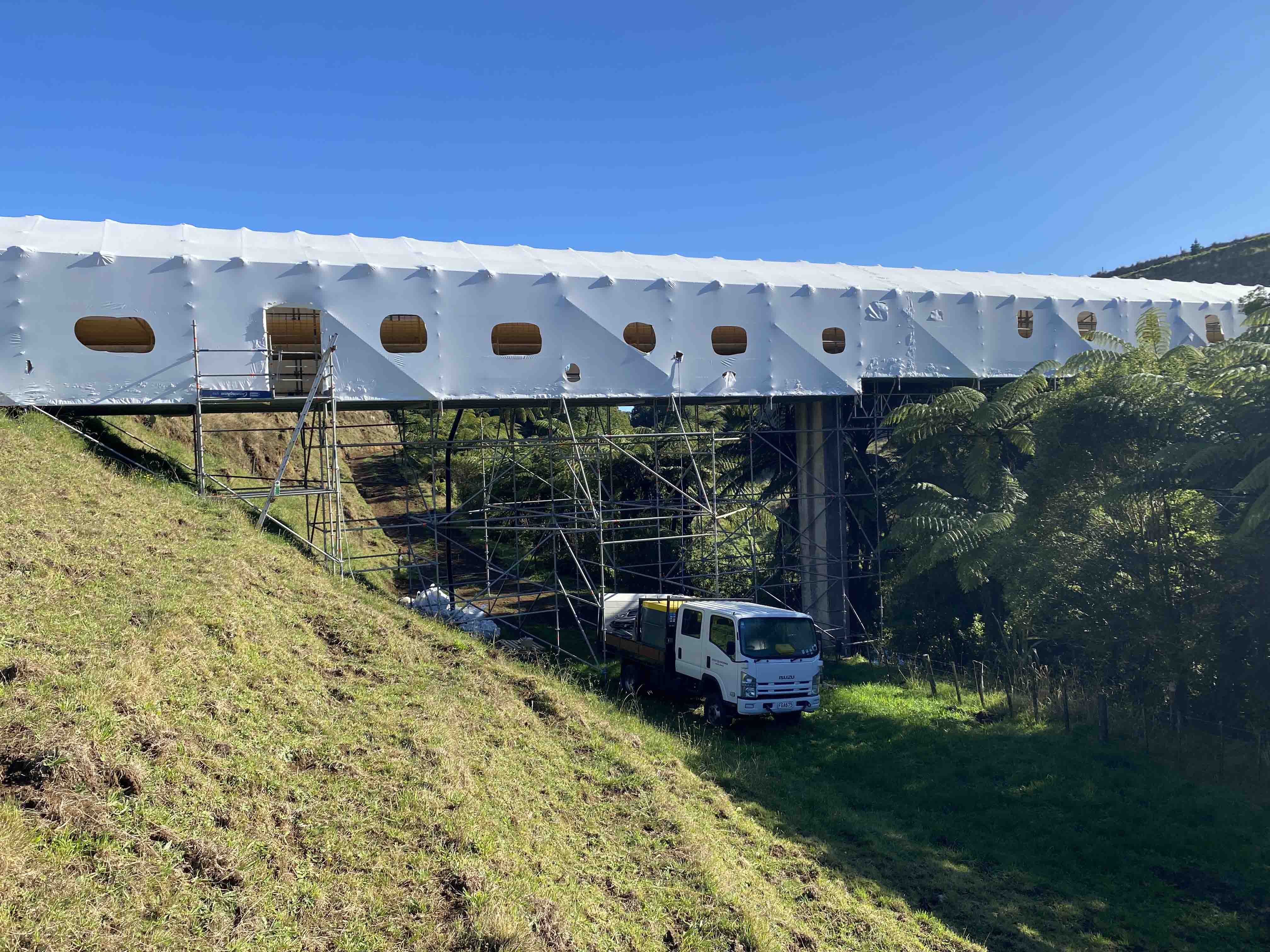
Firstgas pipeline painting project 2025
Quite an undertaking
All our above-ground pipelines are protected by a three-layer coating system, explains Marius. The first (zinc) coat protects the steel pipe itself. The second coat is a barrier layer. The third coat is a glossy buff-coloured UV protectant, which prevents against UV damage.
“it needed a little bit of TLC, so we decided to paint it.”

Marius Gray, Firstgas
When Marius and his team looked at the Katikara Steam aerial crossing in early 2024, “it needed a little bit of TLC, so we decided to paint it.”
But it’s not like painting other structures – the Firstgas team needed to tackle the problem of access to the high, remote section of pipeline. Located on a privately-owned farm, it has rugged sloping land either side, and native trees below. This meant scaffolding had to be custom engineered for the site, creating a ‘staircase’ down the hillside and access points at each end and below. In addition, the scaffolding around the aerial pipeline was wrapped to create a safe workspace protected from wind, rain, and environmental contaminants - conditions essential for effective coating application.
“It was quite an undertaking with several weeks of planning, several more weeks to erect the scaffolding, and then a month or more blasting and painting,” said Marius. “Energyworks delivered the painting and arranged the safe access and they’ve been instrumental in the success of the project.”
Firstgas has strong relationships with all the landowners who have pipelines running through their properties, so taking care of worksites is a priority. The old paint that was blasted away was contained within the shrink-wrapped workspace, then loaded into bags and disposed of properly.
“We try to leave a site in better condition than when we arrived,” says Marius. “As part of the project, we carried out significant tracks improvements, which not only enhanced access during our work but also provided long-term benefit for the landowner.”
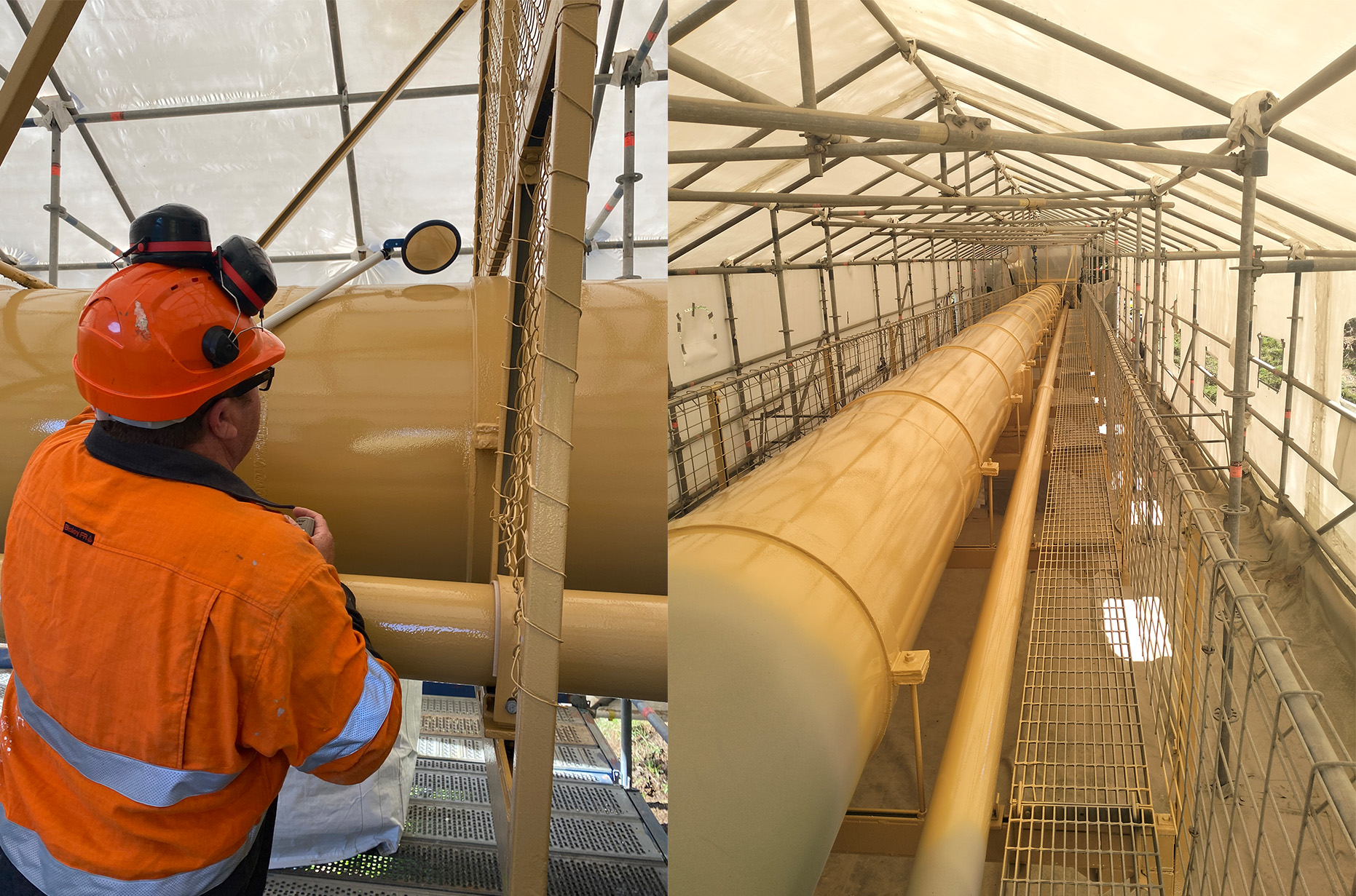
Firstgas pipeline painting project 2025
Keeping an eye on 2,500km of pipelines
Firstgas has more than 2,500km of high-pressure gas pipelines, and we have a programme of work that regularly checks them for any sign of corrosion and coating deterioration.
“We regularly inspect and assess the condition of our assets to ensure they are suitably protected from atmospheric and other forms of corrosion,” Marius says. “We repaint them based on their condition, prioritising according to the site’s atmospheric corrosion category and the asset’s importance. For example, a critical site close to the sea may receive coating maintenance earlier than others.”
It’s all part of our wider Firstgas Asset Management Plan, which sets out how we take care of all our gas transmission assets. Keeping our gas pipelines well maintained and regularly upgraded means the network operates more efficiently.

